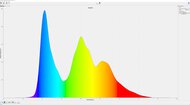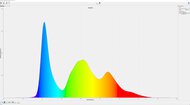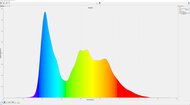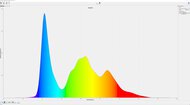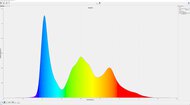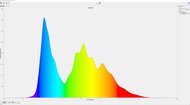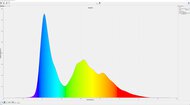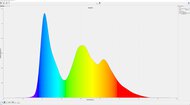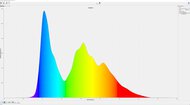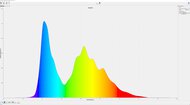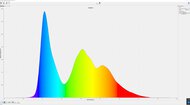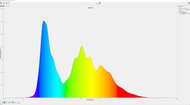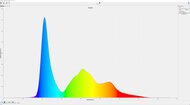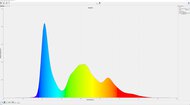- Table of Contents
- Intro
- Sony WOLED vs. LG WOLED
- QD-OLED vs. LG WOLED
- Other Investigations
- Comments
Longevity Burn-In Investigative Paths After 3 Months
QD-OLED vs. WOLED, LG vs. Sony, And More
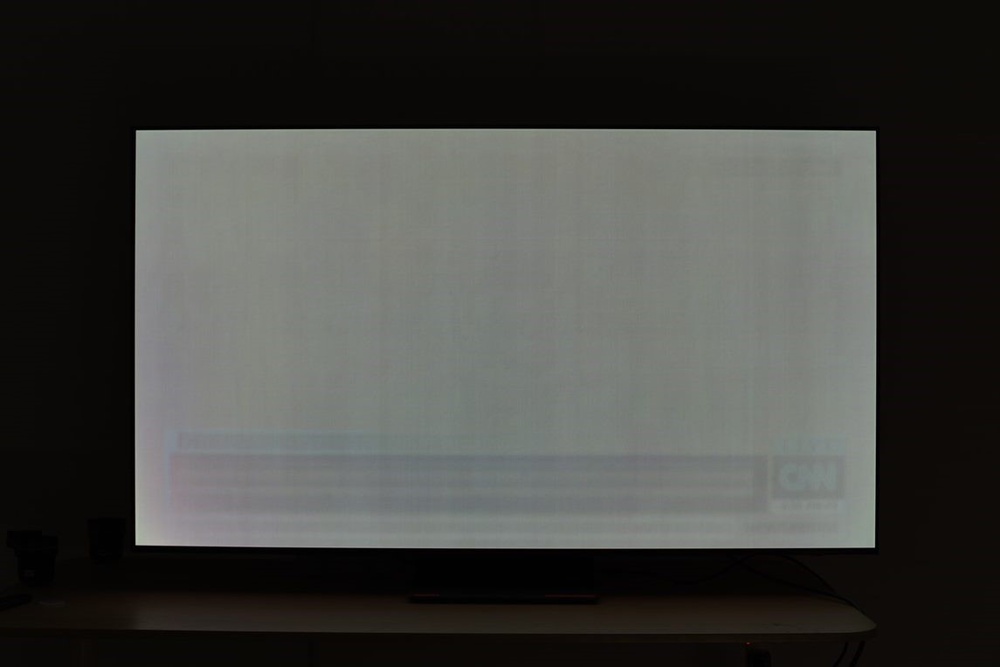 Samsung S95B OLED Burn-In. Note: Samsung firmware changes improved this result since this article's publication.
Samsung S95B OLED Burn-In. Note: Samsung firmware changes improved this result since this article's publication.Our accelerated longevity test has been running for over three months, and we've already encountered some very interesting results. We've already had three partial TV failures and one complete failure, which wasn't expected this early in the test. Both of our QD-OLED displays are showing signs of potential permanent image retention, also known as burn-in. Interestingly, some of the Sony WOLED displays are also showing burn-in.
The data is already starting to paint an interesting picture, but what have we learned so far? The results after three months have led us down multiple new investigative paths, and we've already been able to answer a few of the interesting questions that came up after our two-month results were posted. We're still looking into a few things, but we can already answer a few interesting questions. If you want to read more about our longevity test and how we set it up, check out our first article here.
This is an ongoing test on 100 TVs, and we'll provide updates as events occur throughout the test. You can check back on this page for the latest information, or subscribe to our mailing list to be the first to know.
Sony WOLED vs. LG WOLED
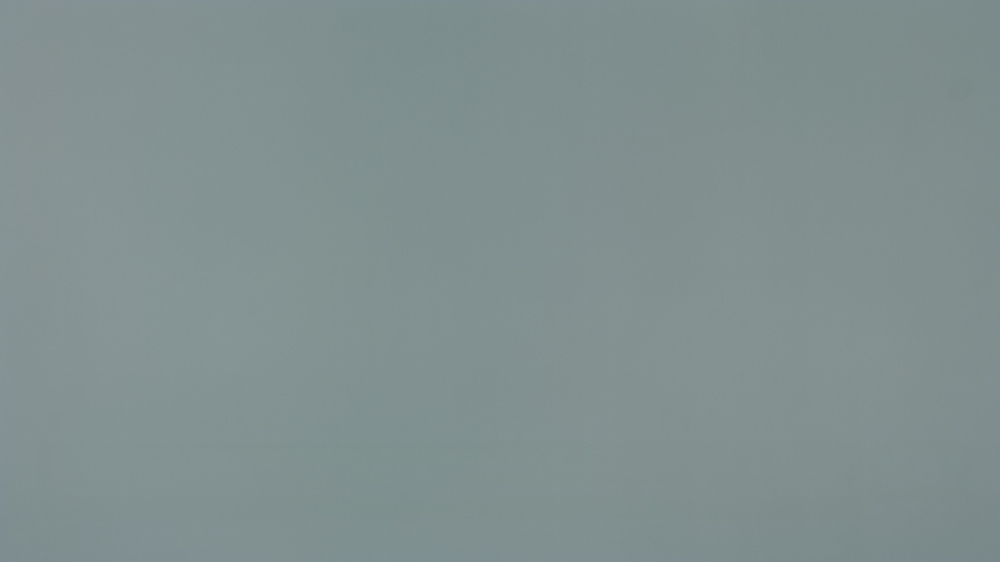 Sony A90K OLED - 50% slide showing possible permanent image retention after two months
Sony A90K OLED - 50% slide showing possible permanent image retention after two months LG C2 OLED - 50% slide showing no image retention after two months
LG C2 OLED - 50% slide showing no image retention after two monthsAfter taking our two-month photos and measurements, we were surprised to see what looked like severe image retention on some of our WOLED displays. The Sony A8H, A80K, A80J, A90J, and A90K all showed severe signs of image retention. The first step here was to determine if this was permanent burn-in or just severe image retention, as we encountered during the two-week soft launch of our test in October 2022.
We decided to run a pixel refresh video to stimulate the OLED pixels and hopefully clear any image retention. This video quickly alternates between different colored images. In our attempts to clear up any image retention on these TVs, we encountered an issue very early on in that the TVs were running at full brightness, and ABL wouldn't kick in with such a rapidly changing pattern. This led to a fairly significant temperature increase on all TVs, so we had to reduce the display brightness to avoid causing permanent damage. Although this procedure was only run on the Sony OLEDs with image retention, we also ran the recovery video on an LG OLED to see if their temperature increased due to the fast-changing pattern. We found there's no difference between LG and Sony TVs in this regard—they both couldn't keep up, and the temperature increased dramatically due to the lack of ABL.
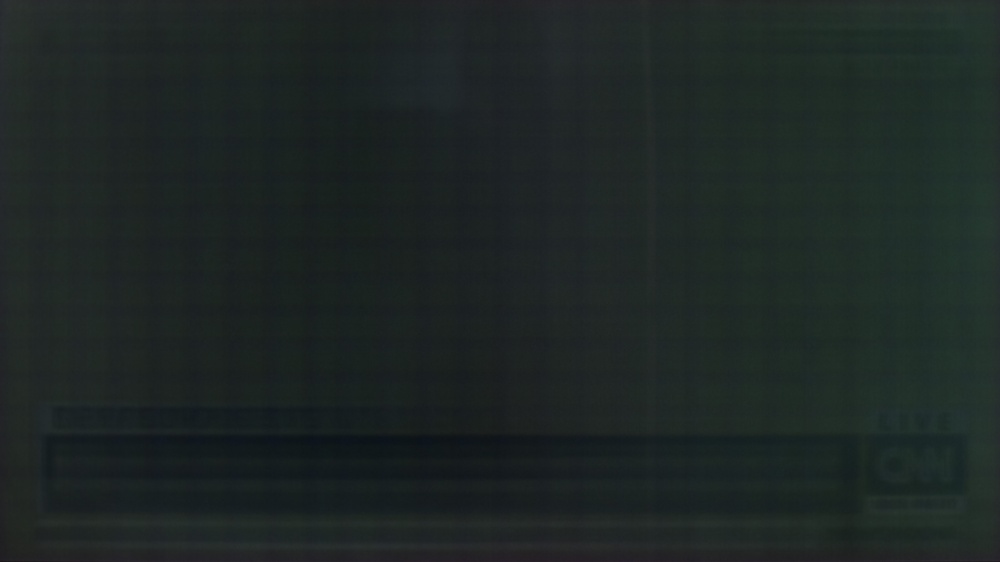 Sony A90K OLED showing the grid from the video intended to remove image retention
Sony A90K OLED showing the grid from the video intended to remove image retentionAfter running this video for about a week, following the regular longevity test schedule for a total of about 125 hours of runtime, we were able to nearly eliminate all image retention on the Sony A8H, A80K, and A90J. The Sony A80J and A90K, however, don't look any better, and it looks like this is permanent burn-in on these two TVs. The attempts to clear the image retention from the A90K made things worse, and there's now noticeable image retention or burn-in of the video that's designed to clear image retention.
The next obvious question is, why is there such a big difference between LG and Sony TVs?
Exploring Differences Between LG And Sony OLED TVs
 Sony A80J OLED teardown
Sony A80J OLED teardownTo understand the difference between LG and Sony, we first wanted to determine how much these TVs have in common. We know that LG Display makes the OLED panels for both LG Electronics and Sony OLED TVs, but what about the other components? We decided to build a database of the different TVs and look into the specific panels used to look for any patterns. We exported the spectral power distribution (SPD) charts for all OLED TVs involved in this test, and we fully disassembled the LG A1 OLED, the LG G1 OLED, and the Sony A80J OLED. We also went into the service menu for each one to find the exact panel used and if it was a WBC or WBE panel.
We found that LG and Sony TVs have very little in common. They share the same OLED layer (that is, the part of the screen that emits light), but there appear to be other differences between the final panel stacks, up to and including the top glass, that we can't investigate at this time. They also all use timing control boards, or T-CONs, made by LG Display, but the exact board varies from one model to another. Other than those two major components, almost everything is different. They use different power supplies, motherboards, and most major components. They also have major differences in software/firmware, and even models from the same company, sharing the same underlying panel, sometimes have significant differences between them, including the frequency of their compensation cycles (more on that later).
So what does this information tell us? Both LG and Sony TVs on this list use a mixture of WBC and newer WBE panels and have different long compensation cycles. The two Sony WOLED TVs that still have burn-in, the Sony A80J and A90K, use WBC and WBE panels, respectively, so it doesn't appear that the panel type makes much of a difference as far as burn-in is concerned. So what else could explain the difference between LG and Sony?
Compensation Cycles
Our leading theory for this issue is that the differences in burn-in performance mainly have to do with the compensation cycles. All OLED displays, including monitors, have two built-in compensation cycles designed to reduce temporary image retention or uniformity issues. Each manufacturer implements this slightly differently, but they almost all have two separate compensation cycles. The first, smaller cycle, runs automatically after the TV is put in standby mode after four hours of cumulative use. The larger cycle runs after a much greater number of hours, anywhere between 500-2000 cumulative hours, depending on the brand and model. In this case, though, we're mainly interested in the small compensation cycle, as it's more likely to have an impact on the short-term results of this test.
We know from our original soft-launch period that LG and Sony TVs implement the small compensation cycle differently. They both run it after four hours of total use once the TV is in standby mode, but while LG TVs run the cycle immediately after putting the TV into standby mode, Sony TVs only do so once the TV has been in standby mode for another four hours. This difference means that for the duration of this test, LG TVs will run 21 small compensation cycles per week, while Sony TVs will only run 3. It seems this difference in compensation cycle could explain why we're seeing more image retention, and now burn-in, on the Sony TVs than we are on the LGs.
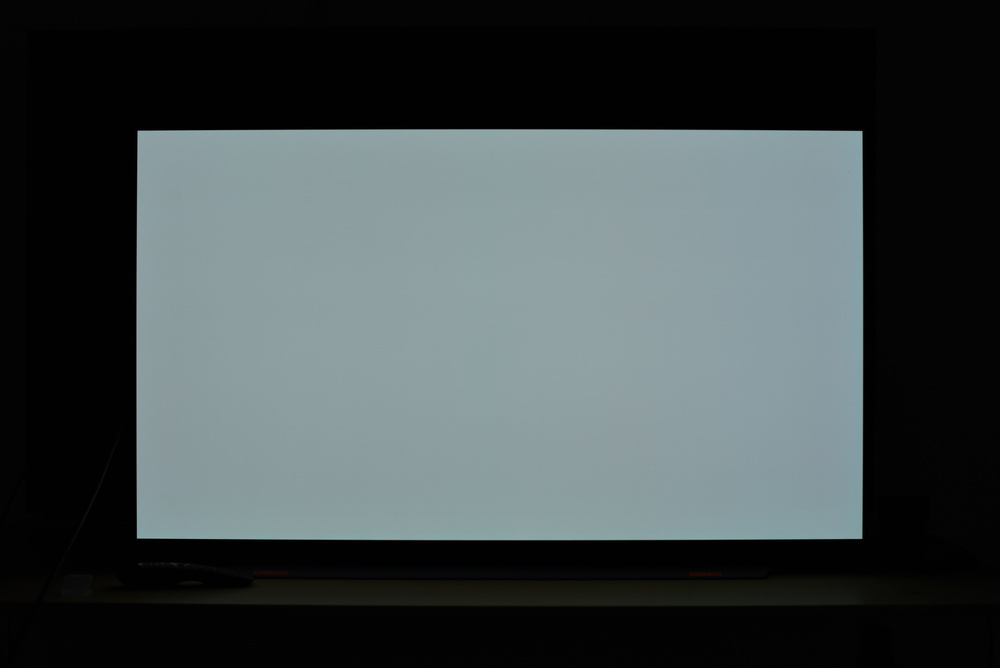 LG C1 OLED after running the live feed for 1 week, with 3 compensation cycles per week
LG C1 OLED after running the live feed for 1 week, with 3 compensation cycles per week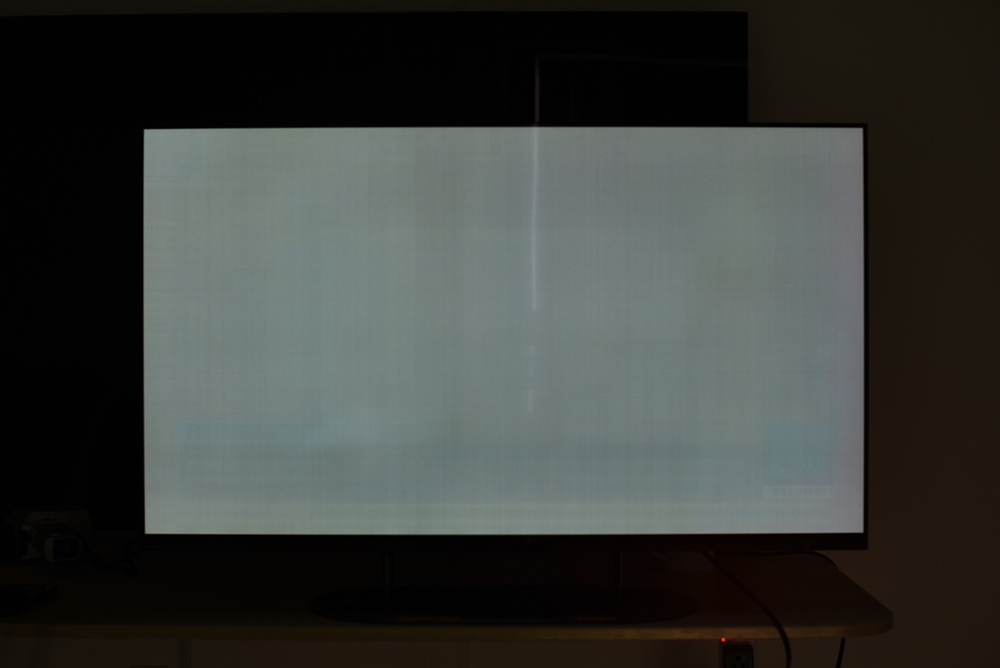 Sony A90K OLED after running the live feed for 1 week, with 3 compensation cycles per week
Sony A90K OLED after running the live feed for 1 week, with 3 compensation cycles per weekTo test this theory, we temporarily decided to add two more displays to our test and reverse their roles. Since the LG TVs can run 21 compensation cycles per week, we decided to run the LG 48" C1 OLED, which we initially tested as a monitor, on the test for a week with a modified schedule. The C1 alternated between a full 24h on cycle and then a 23h on cycle with 1 hour off for the refresh cycle, allowing for a total of only three compensation cycles in a week. Impressively, after running CNN for a week, there's no visible image retention on the LG. At the same time, we ran the 42-inch Sony A90K OLED on the regular longevity schedule, with only three compensation cycles. After one week, despite running on the same schedule with the same number of compensation cycles, the LG is clear, but the Sony TV is already showing image retention. We're now going to try to clear that image retention and then run the 42" Sony A90K for two weeks, but this time allowing it to run three compensation cycles per day. We'll be starting that test shortly, and we should have the results in a few weeks.
We're not sure exactly what the difference is, but based on the results of this short test, it looks like the number of compensation cycles might not be a factor in preventing burn-in. It looks like, with extreme use, LG OLEDs simply fare better than Sony OLEDs as far as burn-in is concerned. We don't know for sure yet, but at the moment, we doubt that in real life this difference will matter for consumers. If you have any other ideas or possible explanations for this difference, please let us know in the discussions.
QD-OLED vs. LG WOLED
 Samsung S95B OLED - permanent image retention (2 month update)
Samsung S95B OLED - permanent image retention (2 month update) LG C2 OLED - no image retention (2 month update)
LG C2 OLED - no image retention (2 month update) LG C7 OLED showing burn-in after 16 weeks
LG C7 OLED showing burn-in after 16 weeksAfter two months, the two QD-OLED displays on this test (Samsung S95B OLED and the Sony A95K) are both showing signs of possible permanent image retention (burn-in), but the LG WOLED TVs like the LG C2 OLED and the LG G2 OLED are clean. These results bring up a few interesting questions. The LG C7s in our real-life burn-in test didn't show any burn-in this early in the test, so does this mean that QD-OLEDs are worse even than the older generation of WOLED panels? What about the impact on PC users, especially given the popularity of QD-OLED displays for monitors (like the Dell Alienware AW3423DW or the Samsung Odyssey OLED G8/G85SB S34BG85)? Should PC users, or anyone really, avoid QD-OLED displays until the burn-in problem is resolved?
Before we can answer those questions, we first need to determine what's going on with these TVs. The Samsung S95B OLED and the Sony A95K OLED are both showing image retention, but is it burn-in? To test this theory, we decided to run a video of alternating colored slides instead of the CNN feed to see if it would reduce image retention on these two TVs. We ran the retention clearing video for about a week (126 hours), following our regular test schedule to allow the TVs to run their compensation cycles. After running this test, the amount of image retention didn't decrease at all; in fact, it looked even worse than our 2-month update photos, as the TVs had been running the regular CNN schedule for about a month between our 2-month update and when we started this extra test.
White Subpixel
Now that we've confirmed that these TVs are experiencing permanent burn-in, why is there such a difference between QD-OLED and WOLED displays? Our first theory was that this had to do with the compensation cycles. The Samsung TV follows a similar compensation schedule to the LG TVs, and with our test schedule, it's running 21 cycles per week. The Sony TV, on the other hand, runs the same cycle as the other Sony TVs, so it only runs three compensation cycles per week. There's a catch, though. The Samsung and Sony QD-OLED show permanent burn-in, and the Samsung looks slightly worse than the Sony, despite the extra compensation cycles. It eliminates the compensation cycles as a possible explanation.
One possible explanation for the difference in burn-in performance is the lack of a white subpixel on the QD-OLEDs. Unlike WOLED panels used on LG OLED displays and some Sony OLEDs, which use red, green, blue, and white subpixels, QD-OLED panels only have a red, green, and blue subpixel. This means that when the TV needs to produce pure white, it has to run all three subpixels at the same time. With static white content, like the white area around a TV news channel's "Breaking News" banner, this could lead to faster degradation of all three subpixels, so they'll appear darker than the surrounding areas. The darker areas on both the S95B and the A95K correspond perfectly to the white areas on CNN's banner, so this looks like it could be the cause of the burn-in. LG Display seems to agree, as they used the two-month results from this test in an LG Electronics Reviewer's event to showcase why they use white subpixels on their OLED displays.
Does this mean that everyone should avoid QD-OLED displays? Probably not. Our test is an extreme case. Two months of runtime on our test is the equivalent of watching about four hours of CNN per day, for about eight months, without ever changing channels or watching anything else. As long you watch varied content and don't leave static elements visible on the screen for long periods, you shouldn't have any issues.
What about PC users; should they avoid using QD-OLED displays? These results don't look good for computer users. A computer's user interface often has large white areas, even if you're using your computer's Dark Mode feature, and those areas are likely to cause burn-in. There are steps you can take to reduce it, though, and as long as you mix up your usage, you probably won't have any issues. It's also unclear if the QD-OLED panels used for computer monitors perform the same. They use different compensation cycles than the TV versions, and this could play an important role in reducing image retention or preventing burn-in. We're looking into possibly adding a QD-OLED monitor like the Dell Alienware AW3423DW or AW3423DWF or the Samsung OLED G8 to the test temporarily to see how they perform. Let us know if this is something you're interested in or if you have any ideas for why these QD-OLED panels might perform differently when used as a TV compared to the Monitor implementations.
Other Investigations
During the first two months of our accelerated longevity and burn-in test, we've also had three TVs partially fail and a complete failure of the Samsung S95B OLED. The Hisense U7G, Sony X95J, and LG G2 OLED experienced three separate and completely unrelated issues. We also noticed significant brightness fluctuations on a handful of TVs. While some of this variation can be explained by the margin of error of our test equipment, a few TVs warranted a deeper look to determine what was going on.
Hisense U7G
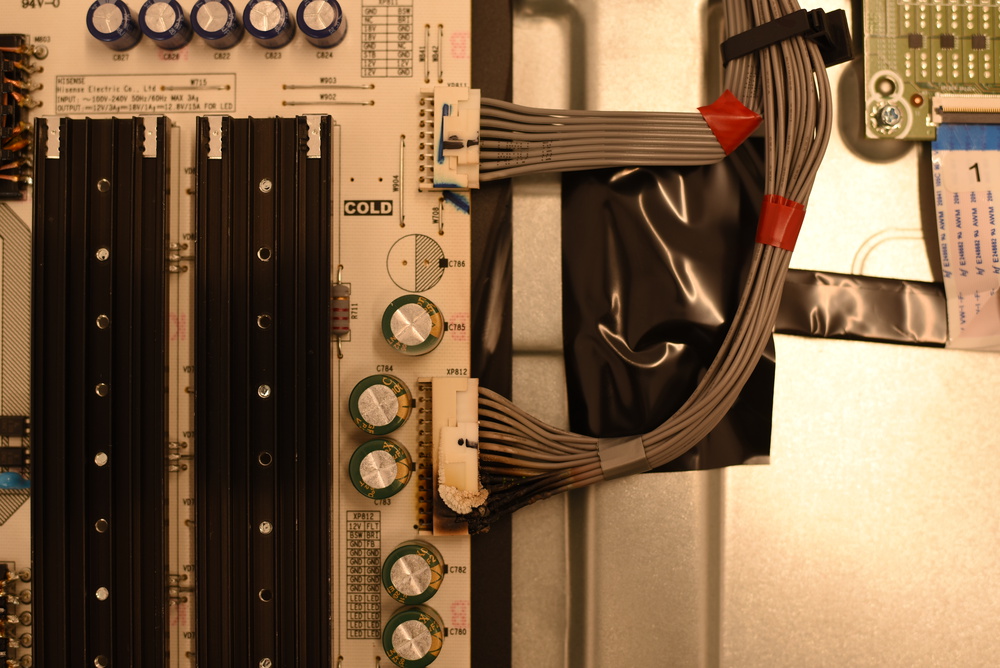 Burned connector on the Hisense U7G that caused the backlight to fail.
Burned connector on the Hisense U7G that caused the backlight to fail.Shortly after we took our two-month measurements, the backlight on the Hisense U7G failed suddenly. With long exposure photographs, we could see that the LCD layer was still functioning (1/15s exposure, 1s exposure, 5s exposure), and it was still drawing some power, but the TV was emitting less than 1 cd/m² of light, confirming the backlight was dead. We disassembled the TV and discovered that a connector between the local dimming zone board to the power supply had burned.
The wiring harness used was either low quality or improperly installed. Over time, the bad connection generated heat which eventually caused the plastic to melt and burn the connector. We don't know yet if this is just an isolated incident with this specific unit or if it could be indicative of a wider quality issue with these TVs.
We ordered replacement parts, and after replacing the burnt power cable shown above, the power supply shown above (since the burnt cable burned the pinouts on the board), and the LED driver board, the TV is now working properly. As of March 7th, 2023, the TV has restarted the longevity test. In total, the TV was down for a little over five weeks, so assuming nothing else goes wrong, this TV will be about 650-700 hours behind the other TVs on this test.
Sony X95J
 |
 |
 |
 |
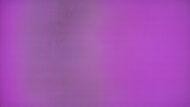 |
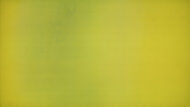 |
 Uniformity issues on the Sony X95J
Uniformity issues on the Sony X95JShortly after starting our longevity test, one side of the Sony X95J started to fade, and it's been gradually getting worse as the test continues. It's really noticeable on slides, and it looks like a significant portion of the backlight is starting to fail, similar to the issue we had with the LG UJ6300 on our original 20/7 burn-in test.
We started to notice this issue about two weeks into the full test when the TV only had about 600 hours of total runtime on it. It's clear that this TV failed much sooner than it should have, and we don't know why. It failed early enough that had this been a consumer purchase, most people would have encountered it during their initial warranty period and would have exchanged it for a new TV under warranty.
For now, we're leaving this TV on the longevity test. We want to see how far it degrades and if any other issues or if the issue spread to other parts of the screen. We plan on eventually dismantling this TV to see if it can be repaired and to try to confirm the root cause of the issue.
LG G2 OLED
Although it hasn't completely failed yet, a single column of green subpixels has failed on our LG G2 OLED. It's occasionally noticeable with some real content, and the dead column is clearly visible in macro photos of the subpixels.
We don't know yet what caused this column of subpixels to fail, but it's important to note that we manipulate our TVs much more than the average user does, as we're constantly moving them around to take measurements and run additional tests. Although we take great care when moving these TVs, given how thin OLED TVs are, this may be physical damage caused by our manipulation of the TVs.
Like with the Sony X95J, we're not taking any additional action at this point. We're leaving the G2 on the longevity test, and we'll keep running it to see if this issue worsens or if anything else pops up.
Samsung S95B OLED
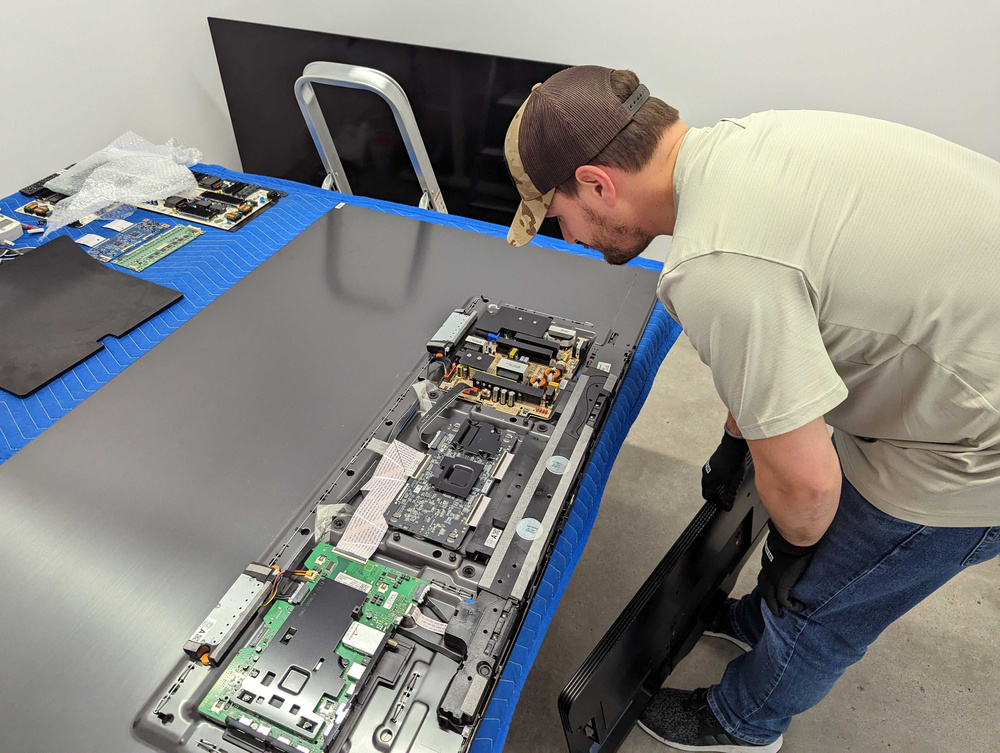 Troubleshooting the Samsung S95B OLED
Troubleshooting the Samsung S95B OLEDWhile we were preparing this article and concluding our extra investigations, our Samsung S95B OLED failed. We dismantled it and discovered that the power supply was no longer providing any DC voltage to the electronics. We've ordered replacement parts for it, which should arrive before the end of March. If we can't repair it, we plan on buying a replacement S95B to continue our test.
We've also received the 2023 version of this TV, the Samsung S95C OLED, which Samsung advertises as more resilient. Let us know in the forums if you want us to add the S95C to the longevity test when we're done testing it!
Brightness fluctuations
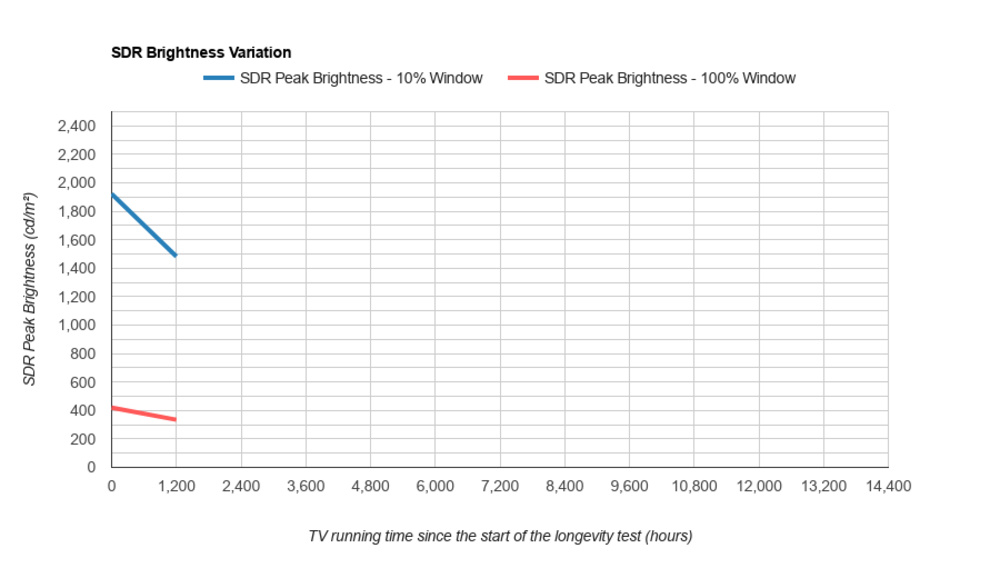 Samsung QN900A 8k QLED brightness variation after two months
Samsung QN900A 8k QLED brightness variation after two monthsWhen we took our brightness measurements after two months, we noticed that quite a few TVs showed a minor fluctuation in peak brightness on both the 10% and 100% windows. For the most part, these differences are explainable by the margin of error of luminance measurements in general, but the Samsung Q900TS 8k, Samsung QN85A, Samsung QN900A 8k, and the Samsung QN800A 8k stood out as their brightness measurements changed considerably in our two-month update.
We looked into this more and discovered that those four TVs received firmware updates during the first two months of our tests. We have a new system in place to take measurements before and after any firmware update, so going forward, we'll know exactly what impact these firmware updates have on our brightness measurements.
There are a few other TVs with interesting results, including the Hisense U6G, which decreased by 15.9% on the 10% window, and the LG QNED99 8k, which decreased by 13.8%. We're not sure what's causing these variations, but it could be the TV's backlight starting to decrease. We'll keep monitoring those TVs over the coming months to see if it was just a minor variation over time or if the backlights are starting to fail.
Comments
Longevity Burn-In Investigative Paths After 3 Months: QD-OLED vs. WOLED, LG vs. Sony, And More: Main Discussion
What do you think of our article? Let us know below.
Want to learn more? Check out our complete list of articles and tests on the R&D page.
Update: Ensured all main picks are still available and represent the best option for user needs.
What do you think of these changes? Let us know
